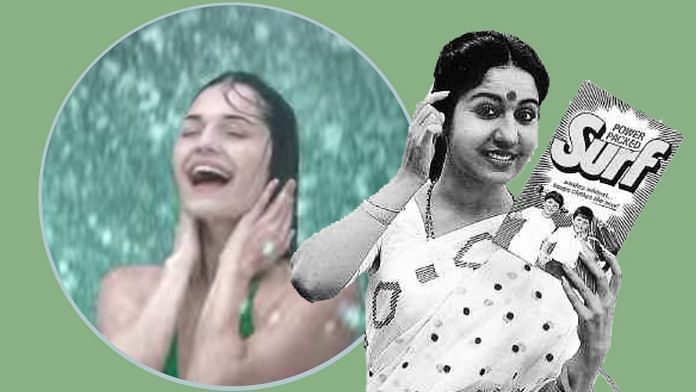The two ads created by Alyque Padamsee showed India at the cusp of change.
Two ads caught the attention of India in the late 1970s and early 1980s. They were poles apart, but came from the same man. The country was at the cusp of change — ready to open up the economy and yet bound by tradition.
The Liril waterfall ad and the Surf Lalitaji ad captured this dichotomy in India perfectly. Both created by ad agency Lintas — now Lowe Lintas and Partners — and late advertising guru Alyque Padamsee.
While the Liril ad showed a fun woman in a swimsuit taking a shower carelessly under a waterfall, the Surf ad showed Lalitaji, a homemaker who knows what’s right and value for money.
“The Surf ad showed the past and the present, while the Liril ad was more a reflection of the present and the future. These ads ushered in a new era, and both Indian advertising and mindset came out of the closets,” marketing expert Harish Bijoor noted.
Also read: Alyque Padamsee, the ad genius who kept advertisements simple and direct
The Liril ad
In the 1970s, Hindustan Lever was introducing a lime soap in India for the first time. It represented freshness and fun. A consumer survey is said to have given Padamsee the idea for the waterfall scene.
The survey suggested that Indian women only get little time during the day to be by themselves — and bathing was one of these moments. The shower became the waterfall, and the idea became a memorable ad for decades.
Karen Lunel, the woman bathing and having fun in the ad, continued to be the ‘Liril girl’ for over a decade. She represented a new India, where wearing a bikini didn’t seem out of the ordinary, and girls could have fun. Lunel was unabashed and unapologetic about enjoying a bath outside, Bijoor said on how the ad became so popular.
Some in the industry said that the state-run television channel Doordarshan even refused to air it initially and then decided to fix time slots for the ad.
The ad became so popular that it became a blueprint for the company. Till 2009, Liril ads featured the waterfall and ‘Liril girl’ — Deepika Padukone and Preity Zinta have both starred in the ads.
“The jingles and the taglines were very carefully crafted, whenever you make an ad, it is absolutely critical to understand the psyche of the people,” Padamsee had told ThePrint in a telephonic interview in September last year. “Somewhere, you need to be a social scientist to understand what will work.”
This ability to connect with the audience was also seen in the Lalitaji ad.
Also read: How India reacted to its first ‘sexy’ condom ad
The Surf ad
For Padamsee, Lalitaji always remained a special character since she was crafted on his mother.
“My mother would always say, ‘Saste cheez kharidne mein aur acche cheez kharidne mein farak hota hai’ [there’s a difference between buying cheap and buying good], and that’s how we created that brand value,” Padamsee had said.
“The price of Surf washing powder was higher than other detergent powder brands, but we were determined not to alter the price or lower it — so we went ahead with it and it was a huge success,” Padamsee had explained while recalling why the ad worked.
Lalitaji, played by Kavita Chaudhury, was not a diminutive woman. She was a homemaker who was assertive and powerful. She convinced the audience that Surf was the right product to buy, even though it meant shelling out a bit more.
“Back in those days, it was not an easy task to promote a product that was more expensive than others,” he had said. Buying Surf almost became a status symbol in India.
Padamsee would go on to create many iconic ads for India — from Hamara Bajaj to KamaSutra — but Liril and Lalitaji continue to be among his best work. Both showed powerful women who were taking their own decisions or doing their own thing, even though they seemed to represent two different faces of India.







Liril more than Lalitaji.